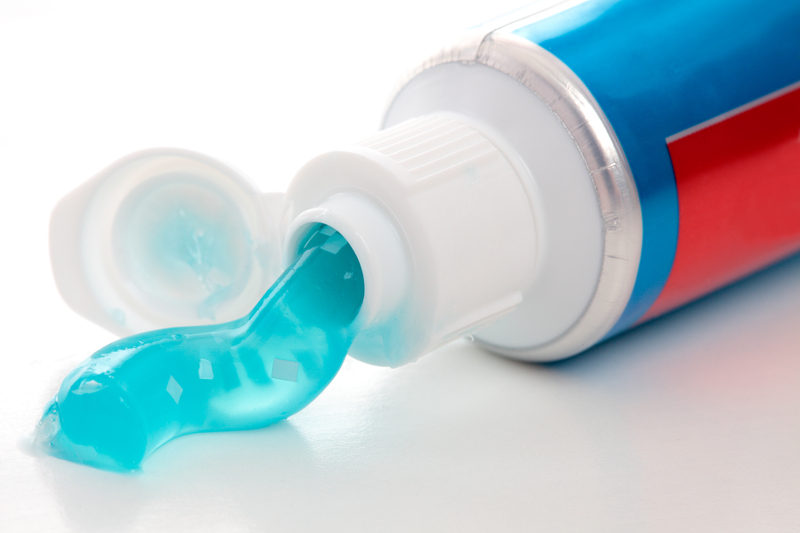Smart Tips to Eliminate Dampness Fragrance
Posted on 03/07/2025
Smart Tips to Eliminate Dampness Fragrance
If you've ever walked into a room and immediately noticed an unpleasant, musty smell, you're not alone. Dampness fragrance, often described as musty or moldy, can linger in homes, offices, basements, or anywhere moisture accumulates. This odor isn't just unpleasant--it's a sign of excess moisture, which can lead to mold growth and, potentially, health risks. Whether you're battling the scent in your wardrobe, beneath your sink, or throughout the whole house, there are a variety of smart, practical solutions to restore freshness. This comprehensive article covers useful and effective ways to eliminate dampness fragrance from your environment.

Understanding Dampness Fragrance: Causes and Effects
Before you can eliminate musty odors for good, it's important to understand what causes them and why addressing the root problem is crucial.
What Causes Dampness Fragrance?
- High humidity levels: When the air indoors contains excess moisture, it creates the perfect environment for mold, mildew, and bacteria to thrive.
- Poor ventilation: In enclosed spaces like bathrooms, closets, or basements, air doesn't circulate well. This traps moisture, making it harder for spaces to dry.
- Water leaks or flooding: Leaking pipes, roofs, or appliances can introduce water into spaces, leading to persistent dampness scent.
- Condensation: Windows, walls, and floors in poorly insulated buildings often gather water droplets, fueling mold and mildew growth.
Health Risks Associated with Musty Odors
Prolonged exposure to the fragrance of dampness can prompt a number of issues, including:
- Allergic reactions such as sneezing, coughing, and itchy skin
- Respiratory problems and aggravated asthma symptoms
- Headaches and fatigue
- Potential worsening of mold allergies
Step-by-Step Solutions: How to Get Rid of Damp Fragrance Effectively
To eliminate dampness fragrance and keep your environment healthy, you need a combination of cleaning, moisture control, and preventive measures. Below are tried-and-tested smart tips to banish that unwanted mustiness for good.
1. Locate and Address the Source of Moisture
- Inspect for Leaks: Regularly check plumbing, walls, ceilings, windows, and appliances for any signs of leaks.
- Examine Basements and Attics: These areas are most vulnerable to moisture intrusion. Make sure they're properly sealed and insulated.
Fixing leaks or water entry points is the critical first step. Until the cause of dampness is removed, the fragrance will keep returning.
2. Boost Air Circulation and Improve Ventilation
Stale, stagnant air is a prime contributor to persistent damp odors.
- Open Windows and Doors: Let natural air circulate whenever possible.
- Use Exhaust Fans: In kitchens, bathrooms, and laundry areas, turn fans on while cooking or showering.
- Consider Installing Air Vents or Mechanical Ventilation Systems: Especially important for basements or areas with poor airflow.
- Employ Ceiling or Standalone Fans: These keep air moving, discouraging moisture accumulation.
3. Harness the Power of Dehumidifiers
Dehumidifiers are highly effective at drawing excess moisture out of the air, one of the fastest ways to combat the unwanted fragrance of dampness.
- Choose the Right Size: Match the dehumidifier to the size of your room for optimal effectiveness.
- Empty Water Trays Regularly: This prevents mold growth within the unit.
- Monitor Humidity Levels: Aim to keep indoor humidity between 30% and 50%.
4. Use Natural Moisture Absorbers
Several everyday items act as natural dampness fragrance eliminators:
- Baking Soda: Place open boxes in closets, drawers, or near damp spots to absorb musty smells.
- Activated Charcoal: These odor-neutralizing bags are excellent for basements, shoe cupboards, and cars.
- Silica Gel Packs: Slip these in shoe racks, camera bags, and pantries.
- Salt: Bowls of salt help draw water out of the air in small spaces.
5. Thorough Cleaning and Disinfection
A deep clean is essential to tackle lingering odors and the microbes behind them.
- Wash Fabrics: Machine-wash curtains, cushion covers, and linens using hot water and an anti-fungal detergent.
- Scrub Surfaces: Clean walls, floors, and tile grout using a solution of water and white vinegar or baking soda.
- Sanitize Carpets: If carpets smell musty, sprinkle with baking soda, let sit overnight, then vacuum thoroughly.
- Clean Furniture: Wipe down wood, metal, or plastic surfaces with a diluted bleach or vinegar solution to kill mold spores.
6. Sun-Dry Items Whenever Possible
The sun's ultraviolet rays are natural disinfectants and deodorants. Air out carpets, cushions, bedding, and clothes outside when weather permits.
7. Apply Odor Neutralizing Sprays and Solutions
- Commercial Odor Removers: Brands designed to target mold and mildew odors can be effective when used as directed.
- DIY Spray: Mix equal parts of white vinegar and water in a spray bottle with a few drops of essential oil (like tea tree or lavender). Spray onto affected surfaces and let air dry.
8. Prevent Future Moisture Buildup
Beyond removing existing odors, maintaining a dry environment is crucial for lasting freshness.
- Keep gutters clean and ensure proper drainage outside your home.
- Seal any cracks in walls or foundation.
- Install waterproof membranes in basements or bathrooms.
- Store items off the floor: Place boxes and furniture on pallets or shelves, especially in basements.
9. Utilize Essential Oils for a Pleasant Aroma
Essential oils not only mask dampness aroma but can also possess anti-microbial properties. Lavender, eucalyptus, and tea tree are popular choices.
- Add a few drops to a diffuser or cotton balls and place them in musty areas.
- Mix with water in a spray bottle to refresh fabrics and curtains.
10. Inspect Regularly and Maintain Vigilance
Regular check-ups of at-risk areas catch minor moisture issues before they escalate into persistent odor problems.
- Inspect under sinks and around appliances monthly for any signs of water pooling.
- Schedule annual inspections of roofing, insulation, and drainage systems.
Room-by-Room Guide: Where to Watch for Dampness Fragrance
Certain spaces in your home are more susceptible to developing dampness scent. Below are tips specific to each problem area.
Basements and Cellars
- Use dehumidifiers year-round.
- Insulate walls and floors to prevent condensation.
- Apply waterproof sealant to foundations.
- Store items in airtight plastic bins, not cardboard boxes.
Bathrooms
- Install and use exhaust fans during every shower.
- Wipe down tiles and squeegee glass doors after use.
- Leave shower curtains open to air dry.
- Clean drains regularly to prevent mold buildup.
Closets and Wardrobes
- Use moisture absorbers or desiccant packs.
- Avoid overcrowding; allow air to circulate between clothes.
- Sun-dry stored linens and seasonal clothes before putting away.
- Place a bar of soap or sachet of dried herbs for a fresh scent.
Kitchens and Pantries
- Address under-sink leaks promptly.
- Keep food in airtight containers to prevent odor absorption.
- Regularly clean garbage disposal and fridge drip trays.
- Use vinegar and baking soda to wipe cupboard interiors.
Laundry Rooms
- Leave washer lids/doors open after each use to dry out.
- Clean lint traps and inspect hoses for leaks.
- Install a dehumidifier if the room feels humid.
Frequently Asked Questions About Eliminating Dampness Fragrance
How long does it take to get rid of musty odors?
With diligent cleaning and moisture control, you can significantly reduce dampness fragrance within a few days. However, stubborn cases may take a couple of weeks to fully clear, especially if structural repairs or professional remediation are necessary.
Are musty smells dangerous?
Musty odors themselves are not toxic, but they are a sign of mold or mildew, which can be harmful to your respiratory system and overall health--especially for children, the elderly, or those with allergies.
What are the best natural remedies for musty smells?
Baking soda, activated charcoal, vinegar, and essential oils are all inexpensive, eco-friendly ways to absorb and neutralize dampness aroma.

When to Seek Professional Help
Despite all your efforts, if the dampness scent persists, it could indicate a deep-seated problem such as hidden mold, faulty plumbing, or poor construction.
- Call a mold remediation specialist if you discover widespread mold or water stains on walls.
- Hire a plumber or contractor for large leaks, recurring damp, or ongoing structural issues.
Conclusion: Banishing Dampness Fragrance for Good
By taking a proactive approach to eliminating dampness fragrance, you'll not only create a more inviting and healthier indoor atmosphere but also prolong the life of your property and belongings. Remember, the keys are addressing excess moisture at the source, regular cleaning, and preventive maintenance. Follow these smart tips to get rid of musty and damp odors, and breathe easy in your refreshed, clean-smelling home.
For more tips and eco-friendly solutions on maintaining indoor air quality, explore our other home care guides!




